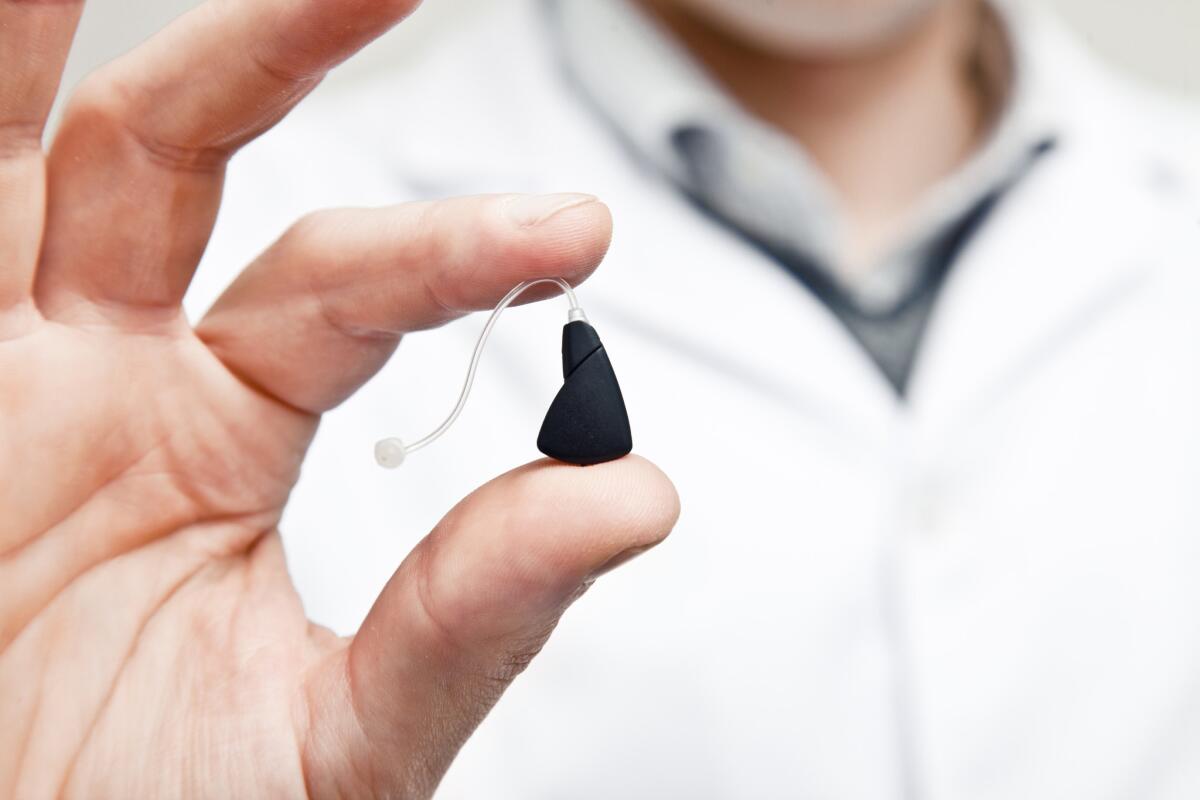Digital hearing aids are music to your ears

New style hearing aids offer compact design and unmatched sensitivity.
- Share via
Today’s hearing aids are smaller, sleeker and more efficient than bulky earpieces of the past. They also plug into digital technology, and that can be a treat for your ears. iPods, TV feeds and smartphones now stream into hearing aids. Specific sounds can be tuned via remote control. Think of these hearing aids as high tech earbuds.
It might be time to trade in your old hearing aids to take advantage of the improvements in comfort and performance made in the last several years. A hearing aid is made up of a microphone, a processor, a receiver and a battery to provide power. The processor separates sound by frequency through channels. Old technology relied on two channels, one for high-frequency sound and the other for low-frequency sounds. Some processors could amplify better than others but were not always successful in dealing with muddy background noise.
Modern wireless aids can be programmed to detect and separate different types of sound frequencies using multiple channels. This allows wearers to hear music and conversation clearly and distinctly, even in a noisy environment. Another highly touted feature of these new digital hearing aids is Bluetooth connectivity to other electronic devices, such as smartphones and music players.
There are now hearing aids that are small enough to fit in the ear canal, so they are almost invisible. Many use rechargeable batteries, which cuts down on the need for constant battery replacement.
Yet of the 28.8 million Americans aged 20 to 69 that would benefit from a hearing aid in one or both ears, only 16% wear them, according to the National Institutes of Health. Why? The Better Hearing Institute cites myriad reasons, but chief among them is a lack of information on how hearing aids can enhance day-to-day life. Hearing loss is typically gradual, so many people don’t realize what they are missing until their condition is more severe.
Costs for newer hearing aid systems can be expensive, and may deter people who know they need hearing aids might put off getting them based on the price alone. However, what is the mental cost of not being able to hear what your grandchildren are whispering to you? Not hearing the conversation at your table in a noisy restaurant, or misunderstanding instructions from a boss?
It’s time to find out if modern hearing aids could change your life. Schedule an exam by an audiologist to determine the type and extent of your hearing loss. The high-tech features, the fit and the adjustment of hearing aids are customized based on the wearer’s personal preferences and needs. And while health insurance might not always pay for hearing aids, government agencies like Veterans Affairs, or labor unions and certain charities offer free and reduced-cost hearing aid programs for qualified individuals. Providers may also offer affordable payment plans — it’s worth it to ask.
—Catherine Gaugh, Custom Publishing Writer



